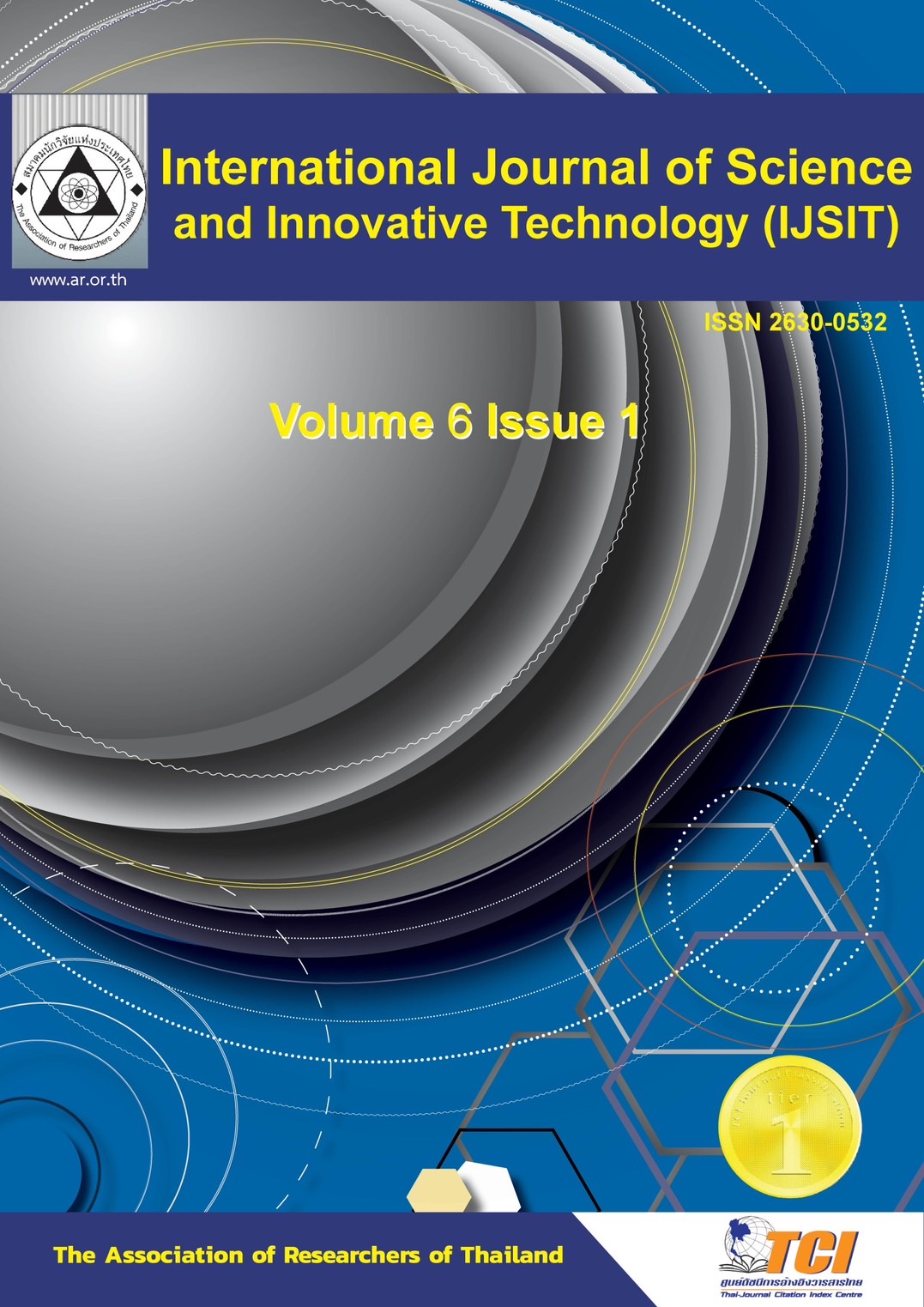Investigation of the Thermal Insulation Walls of Coconut Fiber Mixed with Cement.
Main Article Content
Abstract
This paper aimed to conduct an experimental study of the thermal insulation entering the building compared to the simulated houses installed. Smart Board Wall Type (A), Coconut Fiber Cement Wall Type (B) and Coconut Fiber Cement Wall Type (C) ware the insulation example in this research. Testing of 3 simulated houses, roof facing south. The dimensions of the model house are: 1.20x1.20x1.20 m. The model house was raised with a steel stand 0.20 m from the floor to compare the thermal performance of the house between the smart board wall (A) with air gap and the coconut fiber cement wall. Type (B) with air gap with coconut fiber cement-clad wall (C) with air gaps and vents that have the effect of reducing heat in the room of the experimental house under the climate of Suphanburi Province The results of the experimental study showed that the coconut fiber cement-infused wall (C) with air voids and vents has a lower room temperature. Type (B) Coconut Fiber Cement Wall and Type (A) Smart Board Wall Type (C) Coconut Fiber Cement Wall with air gaps and vents reduces heat more than no installation. Heat vent and the use of natural materials to be beneficial and environmentally friendly.
Article Details

This work is licensed under a Creative Commons Attribution-NonCommercial-NoDerivatives 4.0 International License.
References
Hancharoen, K., & Chotikaprakhan, S. (2016). A Study of Thermal Conductivity of Insulation Made from
Core Fibers. and pineapple poles. In Proceedings of 51st Kasetsart University Annual Conference: Science, Natural Resources and Environment (pp. 50-56). Bangkok: Kasetsart University.
Ministry of Science technology and environment. (2020). The use of insulators from the Department of
Energy Development and Promotion. Bangkok .
Notification of the Ministry of Energy. (2020). Criteria and calculation methods for each building system
design Total energy use of buildings and use of renewable energy in various systems of buildings. Retrived May 29, 2021, from https://energy.go.th/
Phutakot, N., & Thongsamut, Ch. (2010). Developing building walls from waste materials to improve
building comfort (Case study Northeastern region, Thailand). Khon Kaen : Department of Building Technology, Faculty of Architecture, Khon Kaen University.
Putpirotjana, Ph. (2010). A Comparative Study of Energy Consumption in Air Conditioning Between Single
and Two-layer Aerated Concrete Walls. Nakhon Pathom : Faculty of Architecture, Silpakorn University.
Jarawae, R. (2016). Development of plant insulation in local areas (Research Report). Yala : Yala
Rajabhat University.
Puraprom, W. (2019). A study of temperature from heat transfer through building frame to propose
guidelines for design and improvement of high-efficiency walls. For Thai houses, Lanna territories in hot and humid climates (Research Report). Chiang Mai : Faculty of Architecture and Environmental Design, Maejo University.
Watchrodom, N. (2018). Coefficient of performance increase for split-type air conditioners using heat loss
Recovery. RMUTSB ACADEMIC JOURNAL. 6(2), 134-147.


